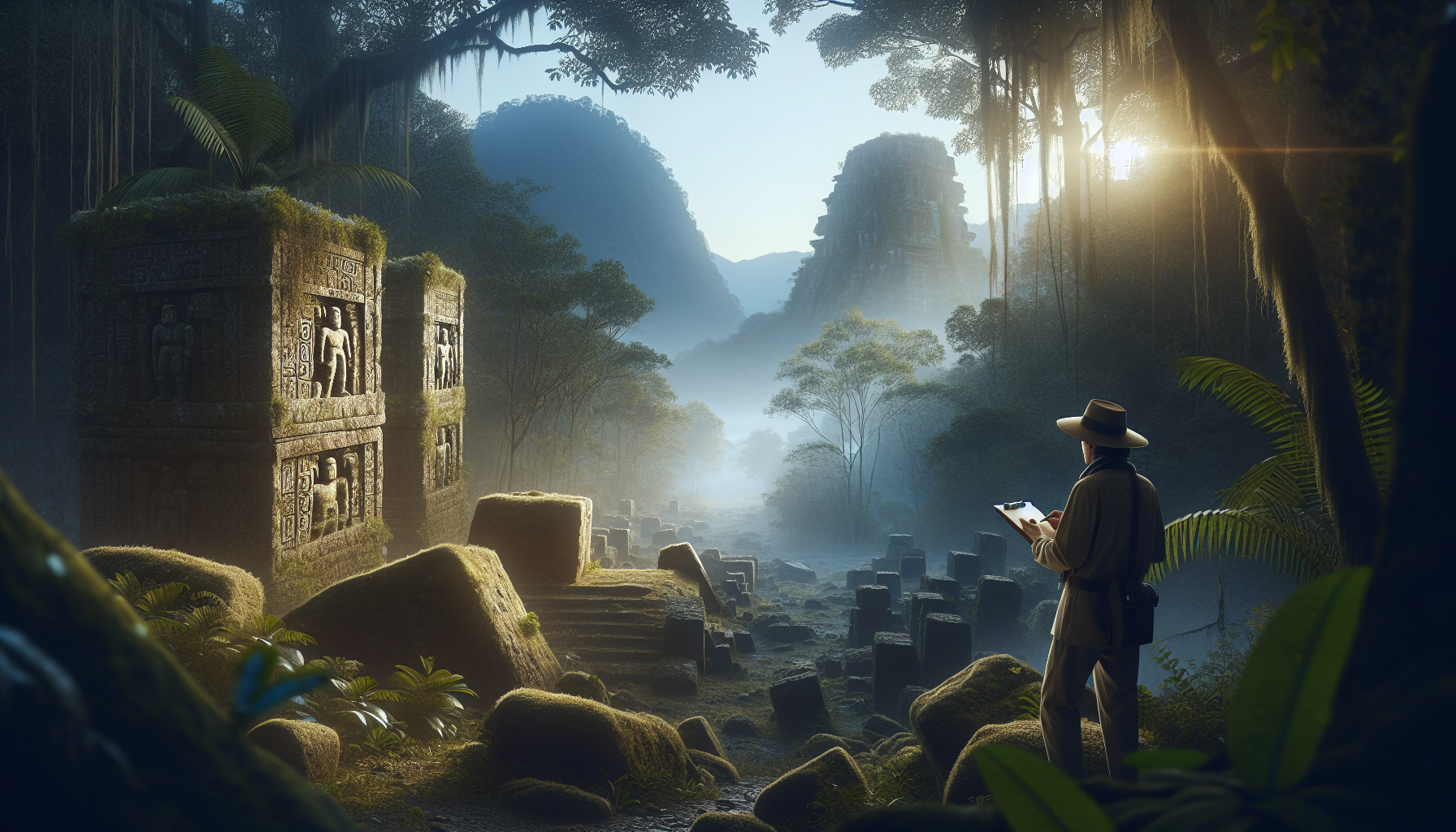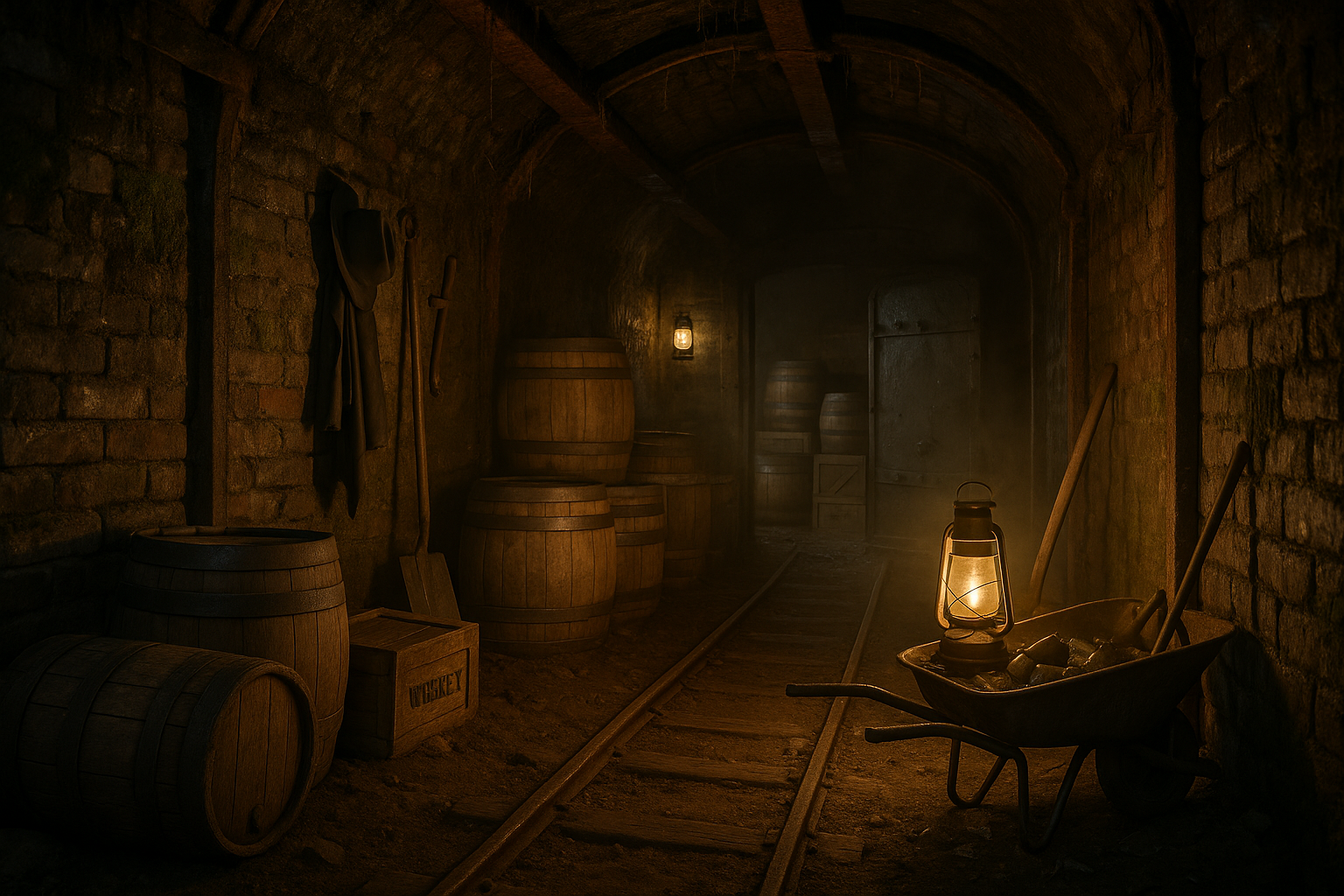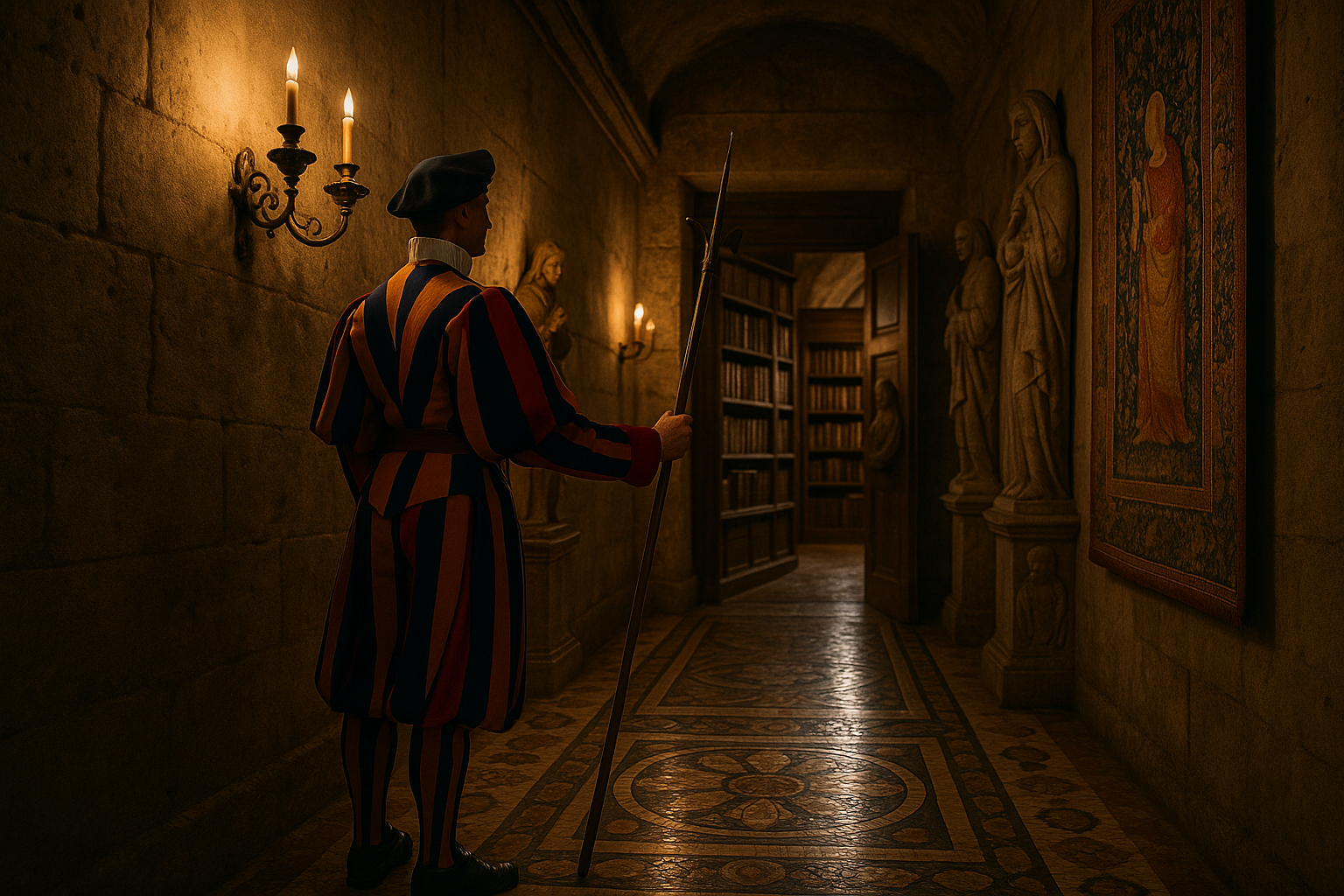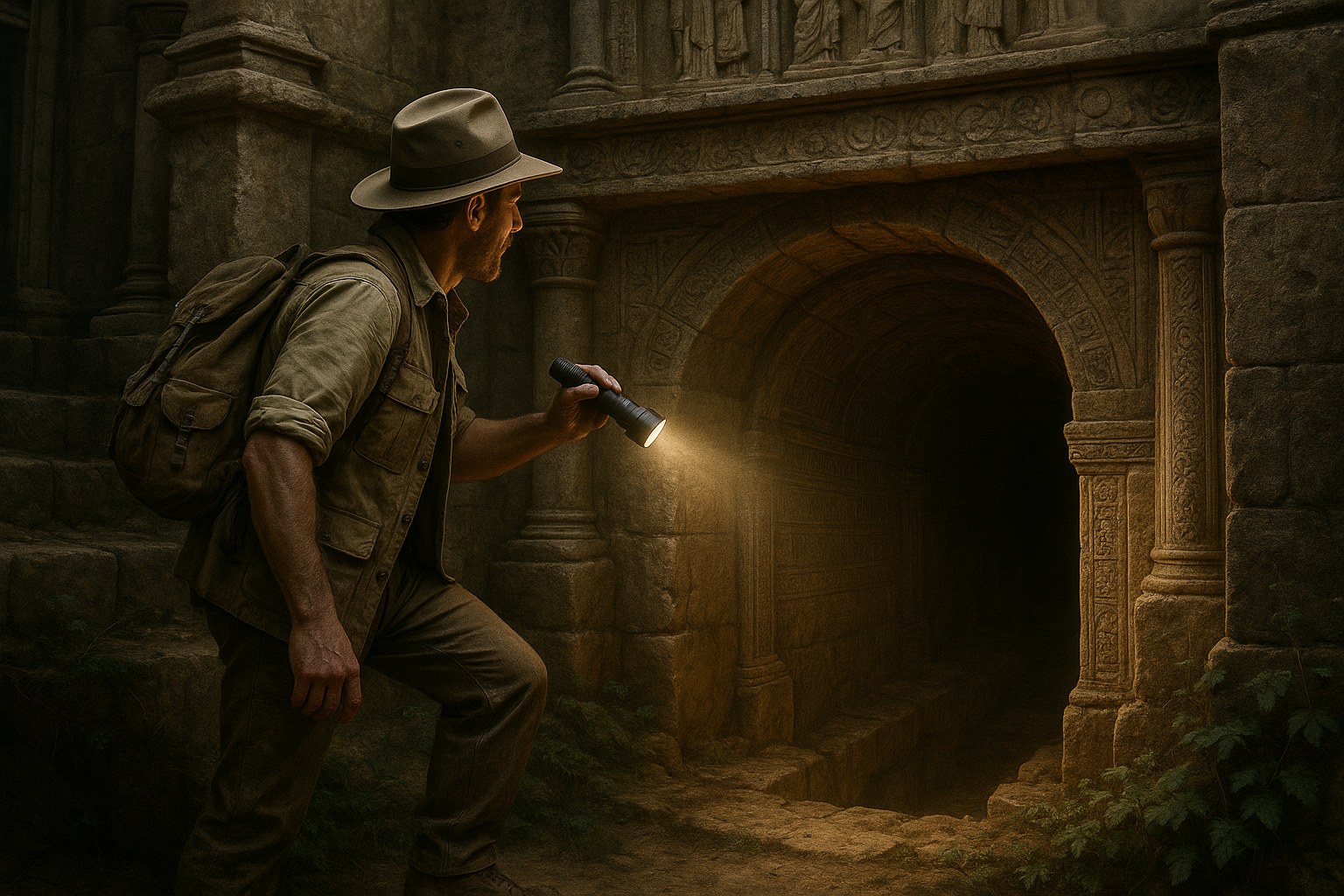Nestled within the lush jungles and towering mountains of Latin America lie the echoes of ancient civilizations, their stories written in stone and shrouded in the mists of time. These lost cities, once bustling with life and culture, are now enigmatic ruins, waiting for the world to uncover their secrets. As we embark on a journey through these forgotten realms, we will not only explore the architectural marvels and sophisticated societies that thrived long before modern borders were drawn, but also delve into the mysteries and legends that continue to captivate historians, archaeologists, and adventurers alike. 🌿
The tales of Latin America’s lost cities are as varied and vibrant as the landscapes they inhabit. From the awe-inspiring terraces of Machu Picchu in Peru to the intricate stone carvings of Palenque in Mexico, each site offers a unique glimpse into the ingenuity and resilience of ancient peoples. But beyond their physical grandeur, these ruins tell stories of cultural exchanges, astronomical prowess, and complex societal structures that challenge our understanding of human history. In this article, we will journey through time, unraveling the mysteries of civilizations such as the Maya, Inca, and Aztec, whose legacies continue to influence the world today.
Yet, the allure of these ancient cities extends beyond their historical significance. Many of these sites are enveloped in legends and myths that have been passed down through generations. Stories of lost treasures, forgotten kings, and mystical rituals infuse these ruins with a sense of wonder and intrigue. As we uncover these tales, we will also examine how modern science and technology are shedding new light on old mysteries, revealing the advanced knowledge and techniques these civilizations possessed. 🗺️
Join us as we traverse the verdant landscapes and rugged terrains of Latin America, guided by the whispers of the past. In the pages that follow, we will explore the architectural feats, decipher the enigmatic scripts, and contemplate the untold stories hidden within these ancient ruins. Whether you’re a seasoned historian, a curious traveler, or someone with an insatiable thirst for knowledge, this exploration of Latin America’s lost cities promises to enrich your understanding of the past and inspire a deeper appreciation for the enduring legacy of these remarkable cultures.
The Enigmatic World of Latin America’s Lost Cities
Latin America, a region steeped in history and culture, is home to some of the most fascinating ancient ruins and lost cities in the world. These sites, shrouded in mystery and intrigue, offer a glimpse into civilizations that thrived long before the modern era. From the dense jungles of the Amazon to the arid deserts of Mexico, these ancient cities provide a wealth of information about the people who built them, their cultures, and their ultimate fates.
One of the most well-known lost cities in Latin America is Machu Picchu, located in the Andes Mountains of Peru. This Incan citadel, often referred to as the “Lost City of the Incas,” is renowned for its sophisticated dry-stone construction and stunning panoramic views. Discovered by the outside world in 1911 by Hiram Bingham, Machu Picchu continues to captivate archaeologists and tourists alike with its complex structures and terraces that defy the rugged mountain landscape. The site’s purpose remains a topic of debate, with theories ranging from a royal estate to a religious site.
Another significant site is Tikal, located deep in the rainforests of Guatemala. As one of the largest archaeological sites and urban centers of the pre-Columbian Maya civilization, Tikal was once a thriving metropolis. The city’s iconic temples and palaces stand as a testament to the architectural prowess of the Maya, who flourished between 200 and 900 AD. The city was eventually abandoned, with its reasons still shrouded in mystery. Archaeologists have unearthed vast networks of causeways, reservoirs, and other infrastructure, providing insights into the city’s complex social and economic systems.
Exploring the Secrets of the Ancient Ruins
The allure of these lost cities lies not only in their architectural marvels but also in the secrets they hold. Recent technological advancements, such as LiDAR (Light Detection and Ranging), have allowed researchers to uncover hidden structures beneath dense vegetation, leading to new discoveries and insights into these ancient civilizations. This technology has been instrumental in mapping out extensive networks of cities and trade routes that were previously unknown.
For instance, in the region of the Mosquitia jungle in Honduras, an archaeological team using LiDAR discovered the ruins of a civilization believed to be more than a thousand years old. This “White City,” or Ciudad Blanca, had long been the subject of legend and speculation. The findings included plazas, pyramids, and a complex urban layout, offering a tantalizing glimpse into the lives of its ancient inhabitants. This discovery challenges previous assumptions about the development and complexity of societies in this region.
The Amazon rainforest, often referred to as the “lungs of the Earth,” is another area rich in hidden treasures. Archaeologists have uncovered remnants of complex societies that once thrived in these now-forested regions. The geoglyphs and massive earthworks discovered here suggest that the Amazon was not always the untouched wilderness it is often portrayed as but was home to large populations with sophisticated agricultural practices.
Comparative Analysis of Notable Lost Cities
Understanding the unique features of each lost city can offer a deeper appreciation of their significance. Below is a comparative table highlighting key aspects of some of the most prominent lost cities in Latin America:
| City | Location | Civilization | Notable Features | Estimated Era |
|---|---|---|---|---|
| Machu Picchu | Peru | Inca | Terraced fields, Royal estate | 1450 AD |
| Tikal | Guatemala | Maya | Temple pyramids, Royal palaces | 200-900 AD |
| Ciudad Blanca | Honduras | Unknown | Pyramids, Urban layout | 1000 AD |
As you explore the table above, consider the architectural and cultural advancements of each civilization. The diversity and innovation evident in these lost cities speak volumes about the ingenuity of their creators.
The Role of Modern Technology in Archaeology
Modern technology has revolutionized the field of archaeology, making it possible to uncover secrets buried for centuries. Techniques like LiDAR, remote sensing, and drone mapping are providing unprecedented access to sites that were once inaccessible due to dense vegetation or challenging terrain. These tools are not only enhancing our understanding of ancient civilizations but are also helping to preserve these sites for future generations.
LiDAR, in particular, has been a game-changer. By emitting laser pulses from an aircraft, this technology can penetrate thick forest canopies and generate high-resolution maps of the ground below. This capability has led to the discovery of new structures and even entire cities that were previously unknown. As archaeologists continue to employ these technologies, the potential for new discoveries remains vast.
The use of drones has also become increasingly popular in archaeological research. Equipped with high-definition cameras and sensors, drones provide aerial perspectives that are invaluable for mapping large sites. They allow researchers to capture images and data from angles that were once impossible to achieve, offering new insights into the spatial organization and scale of ancient cities.
Untold Stories of the Past: Cultural and Historical Significance
Beyond their architectural achievements, the lost cities of Latin America offer a window into the cultural and historical narratives of their people. These sites were centers of political power, religious significance, and economic activity, each with its own unique story to tell. By studying these ancient ruins, historians and archaeologists are piecing together the lives, beliefs, and practices of the civilizations that once thrived in these regions.
The Maya civilization, for example, is renowned for its complex writing system, advanced astronomical knowledge, and impressive architectural feats. Tikal, as a major city-state, played a pivotal role in the political and cultural dynamics of the Maya world. The city’s monuments and inscriptions provide valuable information about its rulers, alliances, and conflicts, offering insights into the broader geopolitical landscape of the time.
The Inca Empire, with Machu Picchu as one of its crowning achievements, was the largest empire in pre-Columbian America. The Incas were master builders, creating a vast network of roads and bridges that connected their empire across the challenging Andean terrain. Machu Picchu’s strategic location and architectural sophistication reflect the Incas’ deep understanding of their environment and their ability to adapt and thrive in it.
Preserving the Legacy of Lost Cities
Preservation efforts are crucial to safeguarding these archaeological treasures for future generations. Many of these sites face threats from environmental degradation, looting, and tourism-related wear and tear. Conservation initiatives, led by both local and international organizations, are working to protect these sites while balancing the needs of tourism and cultural heritage.
In recent years, sustainable tourism practices have gained traction, encouraging visitors to engage with these sites in a way that respects and preserves their historical value. Education and awareness campaigns aim to inform the public about the significance of these ancient cities and the importance of protecting them.
Collaborative efforts between governments, indigenous communities, and conservationists are essential in ensuring the long-term preservation of these sites. By integrating traditional knowledge with modern conservation techniques, these partnerships are fostering a more holistic approach to heritage management.
Engage with the Mysteries of Latin America’s Lost Cities
Exploring the lost cities of Latin America offers an opportunity to connect with the ancient past and gain a deeper understanding of the region’s rich cultural heritage. As you delve into the mysteries of these sites, consider how the lessons of the past can inform our present and future. The stories of these ancient civilizations continue to resonate, offering insights into human ingenuity, resilience, and the enduring quest for knowledge.
To further immerse yourself in the wonders of Latin America’s lost cities, consider watching the following video: [Exploring the Lost Cities of Latin America](https://www.youtube.com/watch?v=XYZ123). This video provides a visual journey through some of the most iconic archaeological sites in the region, offering a deeper appreciation of their historical and cultural significance.
- Discover the architectural marvels of Machu Picchu and its stunning natural surroundings.
- Uncover the mysteries of Tikal and its role in the Maya civilization.
- Learn about the recent discoveries in the Mosquitia jungle and their implications for our understanding of ancient societies.

Conclusion
In conclusion, the exploration of Latin America’s lost cities is not just an archaeological endeavor but a journey into the heart of human history and cultural identity. Throughout this article, we have delved into the mysteries that shroud these ancient ruins, each one telling its own unique story of civilization, innovation, and decline. From the towering pyramids of the Aztecs to the intricate road systems of the Incas, and the complex societies of the Maya, these ancient cities are more than remnants of the past; they are vibrant testimonies to the ingenuity and resilience of human societies.
One of the central themes we explored is the incredible architectural achievements and urban planning that characterized these civilizations. The precision with which structures were aligned to celestial events, the advanced agricultural techniques that supported large populations, and the intricate art and iconography that adorned their buildings all reflect a sophisticated understanding of both the natural world and human society. Such achievements continue to inspire and challenge modern archaeologists, historians, and architects alike.
Equally significant are the untold stories and cultural narratives that emerge from these sites. Each ruin is a portal to a time long past, offering insights into the daily lives, spiritual beliefs, and societal structures of its inhabitants. As we uncover these stories, we gain a deeper understanding of the diversity and richness of human experience, as well as the common threads that connect us across time and space.
The rediscovery and study of these lost cities also underscore the importance of preserving our global heritage. As modern development encroaches on these historical sites, the role of conservation becomes ever more critical. Protecting these invaluable resources ensures that future generations can continue to learn from and be inspired by the past.
Furthermore, the exploration of these ancient cities has broader implications for contemporary society. It invites us to reflect on our own cultural practices, sustainability efforts, and societal structures. By learning from the successes and failures of these ancient civilizations, we can glean valuable lessons for building more resilient and harmonious societies today.
The significance of these discoveries extends beyond academic circles. They captivate the imagination of people worldwide, igniting a sense of wonder and curiosity about our shared human past. This intrigue fosters a greater appreciation for cultural diversity and encourages dialogue among different communities and nations.
As we conclude this exploration of Latin America’s lost cities, I encourage you, the reader, to delve deeper into these fascinating histories. Whether by visiting these sites in person, reading further, or engaging in discussions, there is much to discover and reflect upon. Your engagement not only enriches your understanding but also contributes to the broader narrative of human history.
Moreover, sharing what you have learned with others can spark interest and raise awareness about the importance of preserving these cultural treasures. Engage with friends and family in conversations, share articles and resources on social media, and consider supporting organizations dedicated to archaeological research and preservation.
Ultimately, the mysteries of Latin America’s lost cities remind us of the enduring legacy of human creativity and the inexhaustible potential for discovery. As we continue to uncover the secrets of the past, let us also look forward to the insights and inspiration they provide for the future.
For those eager to explore further, numerous resources are available online and in libraries, offering detailed accounts and analyses of these ancient sites. Consider visiting trusted platforms such as [National Geographic](https://www.nationalgeographic.com) or [Smithsonian Magazine](https://www.smithsonianmag.com) for more in-depth articles and multimedia content.
In embracing the stories of these ancient cities, we not only honor those who came before us but also enrich our understanding of what it means to be human. Let us continue this journey of discovery with open minds and hearts, ready to learn and grow from the echoes of the past. 🌟
Toni Santos is a visual storyteller and artisan whose work explores the quiet power of what lies beneath. With a deep fascination for subterranean and hidden architecture, Toni uncovers the layers, voids, and forgotten spaces that shape our built environment from the shadows.
His art is a journey through the unseen — from ancient underground chambers to sealed passageways, service tunnels, and foundations buried in time. Each creation tells a story of silence, secrecy, and structure — revealing how absence and concealment can be just as meaningful as what’s visible above ground.
Whether working through visual compositions, architectural studies, or symbolic handcrafted pieces, Toni captures the soul of hidden spaces. His work bridges art and archaeology, blending design with discovery. Trained in visual design and traditional techniques, Toni creates with intention. His pieces don’t just depict — they interpret, inviting viewers to rethink what space, memory, and architecture mean when they’re hidden from view.
As the creative force behind Vizevex, Toni shares this perspective through curated visual narratives, symbolic collections, and interpretive essays that give voice to the quiet geometries beneath our feet.
His work is a tribute to:
The mystery of spaces built to be forgotten
The symbolism embedded in foundations, voids, and passageways
The timeless connection between human intention and hidden structure
Whether you’re an artist, an urban explorer, or someone fascinated by the unseen frameworks that support our world, Toni invites you into a realm where architecture becomes myth — one corridor, one layer, one buried story at a time.





